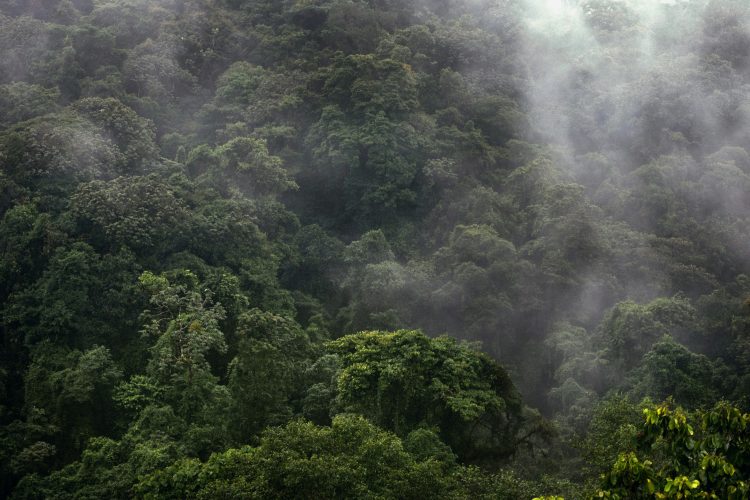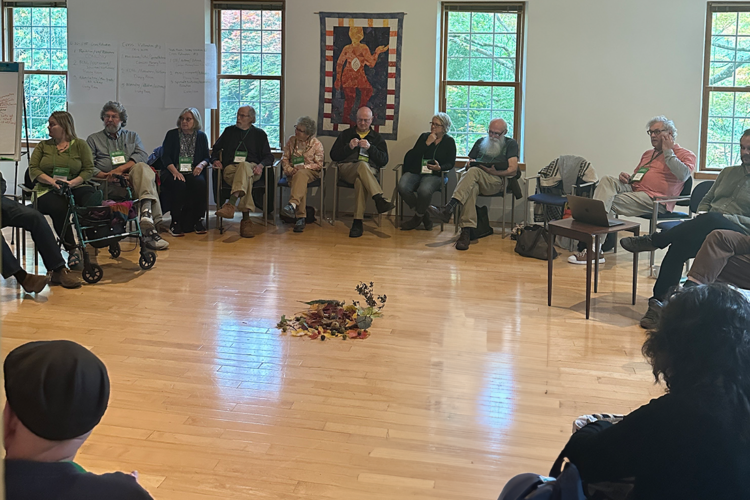The New Climate Agreement: The Real Work Begins Now
By Lindsey Fielder Cook, QUNO.
COP 21 ended on a Saturday night, and on Sunday, I went to the local Quaker Meeting in Paris for worship. I gave thanks for the previous night’s achievement, when nearly 200 countries (except Nicaragua) supported what their representatives described as a “balanced” agreement. After I spoke, a woman visiting from England stood up and described the climate change conference as a failure for not bringing in systems change.
There was truth in both.
From the perspective of more than two years’ work to help build understanding between climate change negotiators, the final hours of the COP 21 were historic. Historic because negotiations have been burdened by issues far beyond the challenge of anthropogenic climate change. Tension in the negotiation room often evolved from continued experiences of power abuse that for some stretch back to colonial times; economic competition, rather than climate science, was more likely to influence positions. This led to the profound situation where developed countries held historic responsibility for anthropogenic greenhouse gas emissions (GHG), while developing countries were responsible for the majority (and increasing levels) of current GHG emissions. A global effort was essential, but an inability to find a “fair way forward” was destroying our chances to keep anthropogenic climate change from threatening the collapse of ecosystems and thus the long-term survival of our current human civilization.
For this reason, it was extraordinary to hear South Africa, as spokesperson for the G77 and China (the largest block of developing countries), describe the new climate change draft as “balanced.” In October, the negotiations were in such a fragile state that this same delegation alluded to black South African apartheid experiences to describe the negotiation proceedings.
What the COP 21 achieved, with the exceptionally effective role of the French COP Presidency and dedicated work from the UNFCCC Secretariat, was to find ways forward on the main blockages: how to share fairly yet effectively the responsibility for GHG emission reduction; how to anchor sufficient financial (and other forms) of support; how to strengthen compliance and include a temperature goal; how to (or not to) include human rights; and how to define the “legal form.” It was historic that nearly 200 countries considered the outcome “balanced”; having the buy in of all is essential for a truly global effort.
The following brief observations of strengths and weaknesses may be helpful.
- On ambition: In a remarkable and unexpected move, nation-states agreed to a more ambitious temperature goal than was expected; specifically, a “global average temperature goal to well below 2C above preindustrial levels and to pursue efforts to limit the temperature increase to 1.5C”. However, time is limited. Current GHG emission levels would lead us to temperature rises of +4C above pre-industrial levels, and the non-legally binding ‘”national targets” (INDCs) would reduce this to about 3C if fully implemented. A global “stock take” is set for 2023, by which time we may have missed our chance to keep temperatures to a 1.5C rise (noting that we are already at + 0.85C).
- On temperature goal: Language is included of a “long-term temperature goal” connected to “global peaking … as soon as possible” and “to undertake rapid reductions thereafter in accordance with best available science” and to achieve balance (net carbon) by 2050. However, “balance” rather than “near zero carbon is of concern because it encourages offsets rather than focusing mitigation action completely on the de-carbonization of economies.
- On compliance: Much stronger language was used than was expected, including INDC cycles every five years and targets that must be increased from the preceding INDC (which means no backsliding). However, while countries are legally bound to “prepare, communicate and maintain” INDCs, there are no legally binding mitigation
targets. - On adaptation: The agreement includes the establishment of a global goal on adaptation to enhance “adaptive capacity, strengthening resilience, and reducing vulnerability to climate change,” and recognition of this role in protecting people and livelihoods.
- On rights: The “rights language” in the Preamble is extensive and includes phrases like “climate justice,” “Mother Earth,” “sustainable lifestyles,” as well as “ensuring the integrity of all ecosystems, including oceans, and the protection of biodiversity.” However, human rights, rights of Indigenous peoples, and gender language did not make the “operative section” of the Agreement and were taken out of the Adaption section.
- Least Developed Countries (LDCs) and Small Island States (SIDS) were stated clearly as vulnerable countries with special adjustments. However, while the LDCs category includes a significant number of African countries, the push to bring all of Africa under a vulnerable status was not successful.
- There is concern over unclear accountability on future finance targets.
- There is concern over the level of support for loss and damage.
- There is concern that language on climate change-induced displacement, migration, and planned relocation did not make the main Agreement and is dealt with in the (weaker) COP decision paper.
- There is concern over the failure to include shipping and aviation emissions.
The new climate change Agreement gives nation-states a framework for global efforts in reducing anthropogenic GHG emissions. Seen as “balanced,” it can encourage significant and urgent action worldwide. Yet the Agreement itself is not a solution to the climate crisis: rather, it is a framework that can enable urgent and sufficient action. The real work begins now: Continue to learn and teach others about the root causes of anthropogenic environmental crises. Seek ways forward for sustainable and just lives. Encourage and ensure that our leaders make the responsible and urgent policy decisions necessary, including our global obligation to humanity and this earth.
In this way, our English Friend was right; although the Agreement is a framework, it is not, in itself, “systems change.” Such change begins within: to build a social, economic, political, and spiritual transformation so that our actions do not destroy the lives of the most vulnerable now, and jeopardize all our future generations.
The real work begins now.

